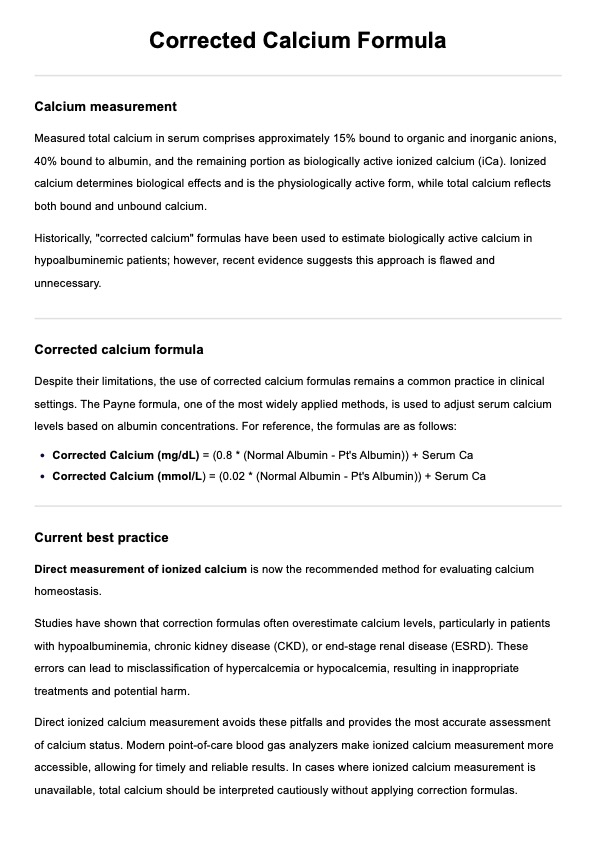The corrected calcium formula has been used to estimate biologically active calcium (ionized calcium) in patients with low serum albumin concentrations. Since total calcium reflects both bound and unbound calcium, changes in albumin concentration can affect serum calcium levels, potentially underestimating the active ionized calcium. The Payne formula (1973), which adjusts total calcium based on albumin levels, has been relied upon to address this issue.

Corrected Calcium Formula
Access our Corrected Calcium Formula handout for an overview and updated guidelines on calcium correction, including best practices for assessing calcium status.
Corrected Calcium Formula Template
Commonly asked questions
Corrected calcium formulas, such as the Payne formula (1973), assume a constant relationship between albumin and calcium binding across all albumin concentrations. However, studies have shown that as albumin levels decrease, more calcium binds per gram of albumin, leading to overestimation of serum calcium concentrations. These inaccuracies are especially common in patients with hypoalbuminemia, chronic kidney disease (CKD), or end-stage renal disease (ESRD). This misclassification can result in inappropriate treatments and potential harm.
Direct ionized calcium measurement is preferred because it directly measures the biologically active form of calcium that determines physiologic effects, independent of albumin levels. Unlike corrected calcium, ionized calcium provides an accurate assessment of calcium status without the need for assumptions about albumin binding. Modern point-of-care blood gas analyzers have made ionized calcium measurement more accessible and reliable, making it the gold standard for evaluating calcium homeostasis.
EHR and practice management software
Get started for free
*No credit card required
Free
$0/usd
Unlimited clients
Telehealth
1GB of storage
Client portal text
Automated billing and online payments











